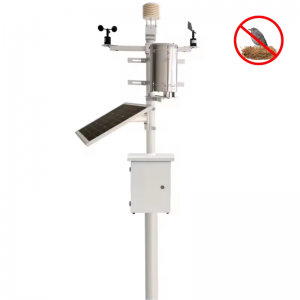The Community Weather Information Network (Co-WIN) is a joint project between the Hong Kong Observatory (HKO), the University of Hong Kong and the Chinese University of Hong Kong. It provides participating schools and community organizations with an online platform to provide technical support to help them install and manage automatic weather stations (AWS) and provide the public with observational data including temperature, relative humidity, precipitation, wind direction and speed, and air conditions . pressure, solar radiation and UV index. Through the process, participating students acquire skills such as instrument operation, weather observation, and data analysis. AWS Co-WIN is simple but versatile. Let’s see how it differs from the standard HKKO implementation in AWS.
Co-WIN AWS uses resistance thermometers and hygrometers that are very small and installed inside the solar shield. The shield serves the same purpose as the Stevenson shield on the standard AWS, protecting the temperature and humidity sensors from direct exposure to sunlight and precipitation while allowing free air circulation.
In a standard AWS observatory, platinum resistance thermometers are installed inside the Stevenson shield to measure dry-bulb and wet-bulb temperatures, allowing relative humidity to be calculated. Some use capacitive humidity sensors to measure relative humidity. According to World Meteorological Organization (WMO) recommendations, standard Stevenson screens should be installed between 1.25 and 2 meters above the ground. Co-WIN AWS is usually installed on the roof of a school building, providing better light and ventilation, but at a relatively high height from the ground.
Both Co-WIN AWS and Standard AWS use tipping bucket rain gauges to measure rainfall. The Co-WIN tipping bucket rain gauge is located on top of the solar radiation shield. In a standard AWS, the rain gauge is usually installed in a well-open location on the ground.
As raindrops enter the bucket’s rain gauge, they gradually fill one of the two buckets. When the rainwater reaches a certain level, the bucket tilts to the other side under its own weight, draining the rainwater. When this happens, the other bucket rises and begins to fill. Repeat filling and pouring. The amount of rainfall can then be calculated by counting how many times it tilts.
Both Co-WIN AWS and Standard AWS use cup anemometers and wind vanes to measure wind speed and direction. The standard AWS wind sensor is mounted on a 10 meter high wind mast, which is equipped with a lightning conductor and measures the wind 10 meters above the ground in accordance with WMO recommendations. There should be no high obstacles near the site. On the other hand, due to installation site limitations, Co-WIN wind sensors are usually installed on masts several meters high on the roof of educational buildings. There may also be relatively tall buildings nearby.
The Co-WIN AWS barometer is piezoresistive and built into the console, whereas a standard AWS typically uses a separate instrument (such as a capacitance barometer) to measure air pressure.
Co-WIN AWS solar and UV sensors are installed next to the tipping bucket rain gauge. A level indicator is attached to each sensor to ensure that the sensor is in a horizontal position. Thus, each sensor has a clear hemispherical image of the sky to measure global solar radiation and UV intensity. On the other hand, the Hong Kong Observatory uses more advanced pyranometers and ultraviolet radiometers. They are installed on a specially designated AWS, where there is an open area for observing solar radiation and UV radiation intensity.
Whether it is win-win AWS or standard AWS, there are certain requirements for site selection. AWS should be located away from air conditioners, concrete floors, reflective surfaces and high walls. It should also be located where air can circulate freely. Otherwise, temperature measurements may be affected. In addition, the rain gauge should not be installed in windy places to prevent rainwater from being blown away by strong winds and reaching the rain gauge. Anemometers and weather vanes should be mounted high enough to minimize obstruction from surrounding structures.
To satisfy the above site selection requirements for the AWS, the Observatory makes every effort to install the AWS in an open area, free of obstructions from nearby buildings. Due to the environmental constraints of the school building, Co-WIN members usually have to install AWS on the roof of the school building.
Co-WIN AWS is similar to “Lite AWS”. Based on past experience, Co-WIN AWS is “cost-effective but heavy-duty” – it captures weather conditions quite well compared to standard AWS.
In recent years, the Observatory has launched a new generation public information network, Co-WIN 2.0, which uses microsensors to measure wind, temperature, relative humidity, etc. The sensor is installed in a lamppost-shaped housing. Some components, such as solar shields, are produced using 3D printing technology. Additionally, Co-WIN 2.0 leverages open source alternatives in both microcontrollers and software, significantly reducing software and hardware development costs. The idea behind Co-WIN 2.0 is that students can learn to create their own “DIY AWS” and develop software. To this end, the Observatory also organizes master classes for students. The Hong Kong Observatory has developed a columnar AWS based on Co-WIN 2.0 AWS and put it into operation for local real-time weather monitoring.
Post time: Sep-14-2024



